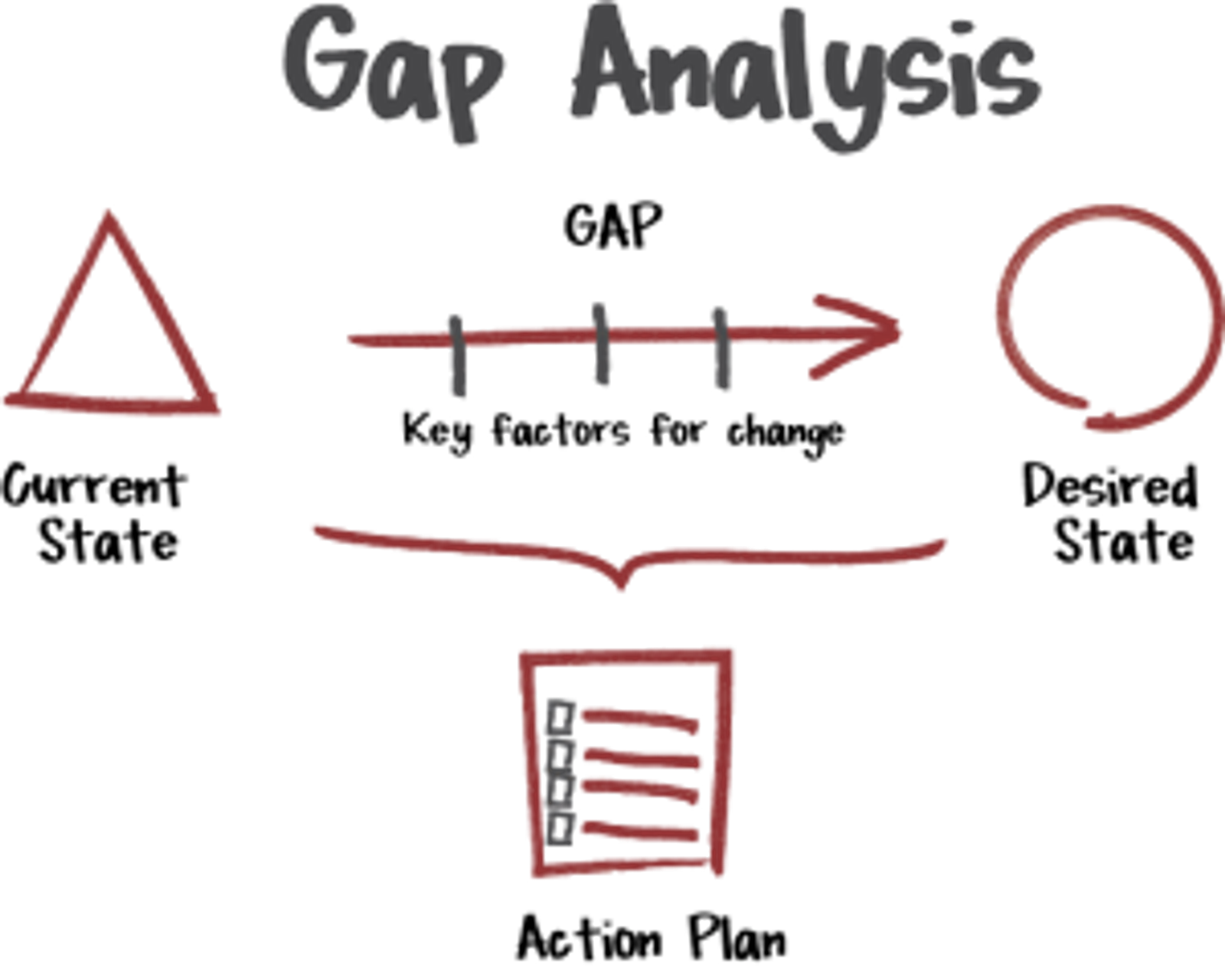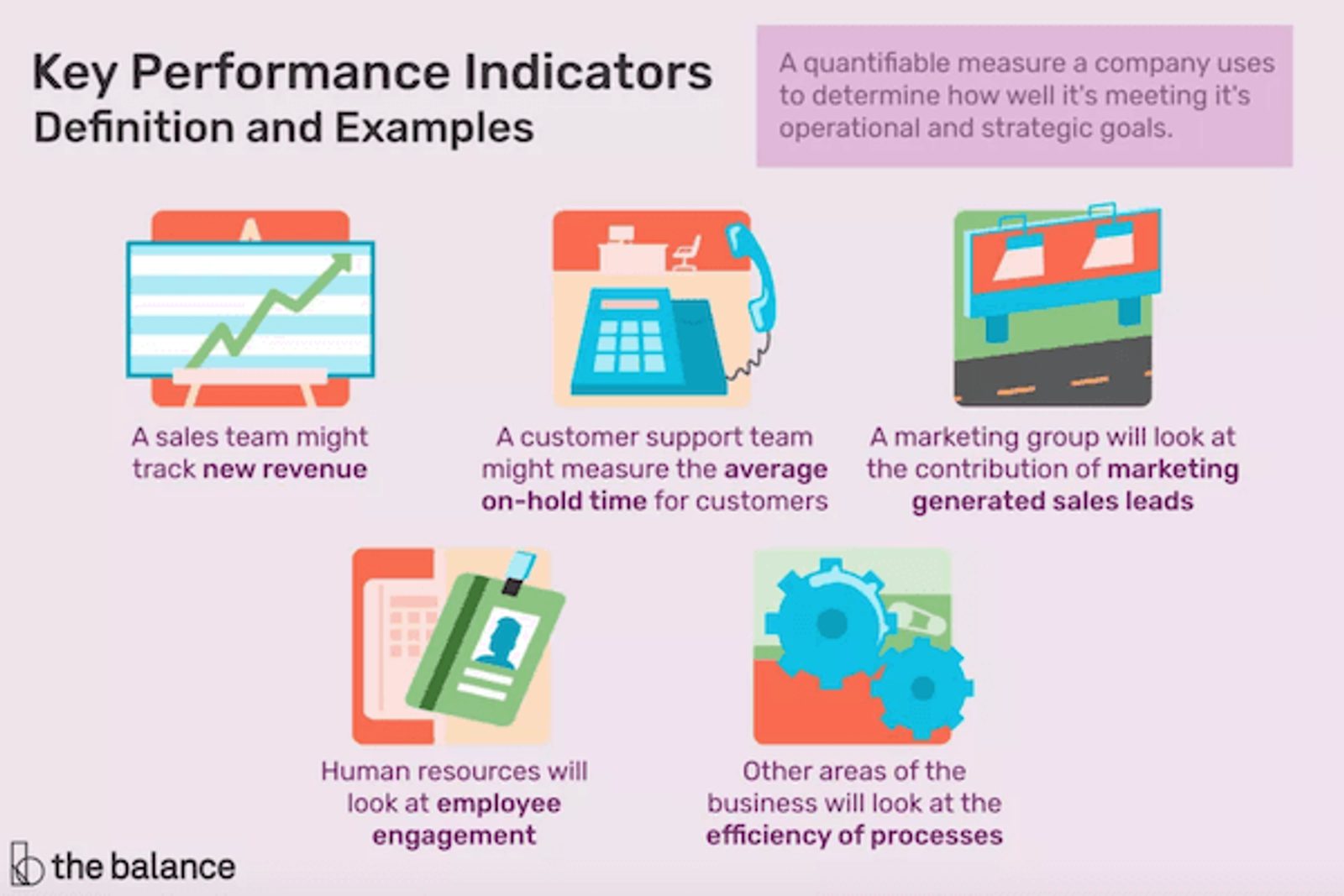Do you have any of these business goals?
- Reach more people
- Retain more customers
- Make more of an impact
- Sell more products
- Make more money
You need to reach these goals in a sustainable way. A big piece of that involves putting processes in place to get — and stay — organized.
Sure, spending hours updating Excel spreadsheets of contact info or manually sorting through stacks of business cards might work now, but you can’t live like that forever.
That’s where CRM comes into play. The right CRM software helps your business meet these goals efficiently — no spreadsheet necessary. It can also scale with your business as it grows. This means you can put customer management processes in place now that will work for a long time to come.
To reach your maximum CRM-using potential, you need to build out a CRM strategy. Within that strategy, set objectives based on your business goals. What exactly do you want to get out of your CRM implementation?
In this post, we’ll cover how to set goals as part of your CRM strategy:
- What is a CRM strategy — and why do you need one?
- Be SMART about your CRM goals
- 4 CRM goals you can set today
- How to measure the success of your CRM goal
What is a CRM strategy — and why do you need one?
Where do you have the most trouble in your sales, marketing, and customer support processes?
Do any of these gaps sound familiar?
- A poor handoff from marketing to sales. Sales doesn’t have the information and tools they need to convert the leads marketing passes along.
- An inefficient sales process. Leads stall at certain parts of the sales cycle, fall through the cracks, or take way too long to close.
- Low customer retention. Sales has no problem closing deals, but customers don’t stick around.
- A lack of transparency and communication. Marketing, sales, and customer support work in silos. Teams interact with customers blindly and don’t share information or insights with each other.
- Unhappy customers. Your customer support team works overtime, but can’t get through all of the tickets — and your NPS score has tanked.
Creating a CRM strategy will help you make the most of your software. To set your CRM strategy, figure out where your current gaps are. The goal of implementing a new CRM is to fill those gaps.

What do you need to do to turn where you are now into where you want to be? (via BuzzAnalysis)
A CRM strategy keeps everyone focused on reaching the same goals. Your CRM software impacts sales, marketing, and customer support teams — not to mention management. 50% of CRM implementations fail to meet management expectations.
Getting buy-in from management across the organization before you get your CRM up and running keeps everyone on the same page.
If you don’t get everyone on the same page, you might end up with:
- Marketing passing unqualified leads on to sales
- Leads slipping through the cracks
- Teams whose goals contradict one another
- Doubling work or working inefficiently
CRMs can have a lot of jargon involved — make sure you know how your organization defines each piece:
- How do you define a lead? A prospect? A contact? A customer?
- What deal stages do you use?
- What does your pipeline look like?
- What makes a lead qualified?
- Do you use lead scoring?
- When does the handoff from marketing to sales happen?
To learn more about the CRM implementation process, click here. To dive deeper into setting CRM goals, keep reading.
Be SMART about your CRM goals
“A goal properly set is halfway reached.” – Zig Ziglar
You might be tempted to set goals like “eliminate customer churn” or “close every single deal that comes through our pipeline.” These goals are vague, with no deadlines, metrics, or action plans attached.
Being ambitious with your goals rocks, but it’s even more important to be SMART:
- Specific: What exactly will you accomplish? What actions will you take?
- Measurable: What data will you use to measure this goal?
- Achievable: How realistic is this goal? Do you have the resources you need to accomplish it?
- Relevant: Why does this goal matter? How does it fit in with your broader business objectives?
- Timely: When will you reach this goal?
Don’t set this goal: “Eliminate customer churn.”
What makes this a not-so-smart goal?
- It’s not specific: There’s no action plan. How will you eliminate churn?
- It’s not measurable: How do you measure churn?
- It’s not achievable: Customers will always churn. It’s a fact of business. Completely eliminating churn is just not realistic.
- It’s not relevant: Or is it? We have no way of knowing without more information.
- It’s not timely: There’s no deadline associated with the goal
Try this instead: “Too many of our customers leave after one purchase. Repeat customers spend more (and cost less) than new ones, so we want to increase customer loyalty.
Our goal: To decrease customer churn by 25% by the end of next quarter, as measured by our CRM software.
To do so, we will focus on using our new CRM to improve communication between our sales and customer support teams.”
What makes that second goal SMART?
- Specific: Gives specific actions — “Will focus on improving communication between our sales and customer support teams”
- Measurable: Sets a quantifiable goal — “decrease customer churn by 25%” — and has the software in place to measure it
- Achievable: Specifies the tools we’ll use to reach it — “our new CRM”
- Relevant: Ties directly into the broader goal — “to increase customer loyalty”
- Timely: Sets a deadline — “by the end of next quarter”

Setting SMART goals makes it easier to create an action plan to meet them. It also helps you measure and report on your success. (via GIPHY)
4 CRM goals you can set today
How can CRM software help grow your business? How does setting the right CRM goals make your sales process faster and smoother?
Here are 4 CRM goals you can set today:
- Increase customer retention
- Shorten the sales cycle
- Sell more
- Decrease your customer acquisition cost
1. Increase customer retention
The goal: To keep customers coming back for more.
Focus on the R in CRM: relationships. Building relationships helps you retain customers.
68% of customers who churn do so because they believe you don’t care about them.
You do care about your customers. CRM makes it easier to prove it. You can track their interests, activity, and interactions with your brand to get to know them better — then set up campaigns that encourage (and reward) loyalty:
- Reward customers for repeat purchases by automatically sending discount codes
- Send personalized emails based on previous purchases
- Track how long customers have been with you, then reward them at certain milestones with discounts or free gifts
- Ask for feedback. Send out surveys or encourage them to leave reviews.
When customers feel heard and appreciated, they become much more likely to stick around.
CRMs also give you insight into your customer behavior at a macro level. Look at any accounts that have churned in the past — what do they have in common? Figuring out common indicators that a customer might leave lets you work with at-risk accounts.
The SMART version of this goal might look like the example we gave earlier:
- “Too many of our customers leave after one purchase. Repeat customers spend more (and cost less) than new ones, so we want to increase customer loyalty.
- Our goal: To decrease customer churn by 25% by the end of next quarter, as measured by our CRM software.
- To do so, we will focus on using our new CRM to improve communication between our sales and customer support teams.”
2. Shorten the sales cycle
The goal: to speed up your sales process and close deals more quickly.
CRM was made for this. Its raison-d’etre, if you will.
What sounds easier — manually entering every customer interaction into a spreadsheet, or knowing that your CRM system tracks them all without you lifting a finger?
CRM makes your sales process more efficient, meaning you can sell more in less time.
Not sure where your sales process tends to slow down? Run a CRM report to help you identify bottlenecks. These reports help you identify areas of improvement. The process might look like this:
- You run a Sales Performance Report through your CRM
- You find that 50% of your leads sit in the “Needs Analysis” pipeline stage
- You dive deeper and find that because they deal with so many leads each day, your sales team only follows up with two-thirds of the leads in that stage
How do you increase efficiency to solve that bottleneck?
Sales automation.
Stop sales tasks from piling up or slipping through the cracks. Use your CRM to automatically assign tasks to your sales team based on customer actions or deal value.

In this sales automation:
If the deal value is above $500, ActiveCampaign automatically assigns a task to the salesperson to call the lead. If the deal value is below $500, the lead will automatically be entered into a nurture campaign.
Automating the tedious parts of the sales process — like assigning tasks and organizing contact info — gives your sales team more time back to do what they do best: close deals.
The SMART version of this goal might look like this:
- “Too many leads stall at certain stages of the sales cycle, then lose interest or fall through the cracks — and the deal never closes.
- Our goal: to reduce the length of our sales cycle by 50%, from an average of 4 months to 2 months. We need to move leads from one stage of the pipeline to the next more quickly.
- To do so, we will use sales automations to assign follow-up tasks to the sales team. By regularly following up with leads throughout the pipeline, we will reduce the number of leads who stall at a certain stage.”
3. Sell more
The goal: To increase sales.
The best way to do that? Focus on selling to the right people.
In a perfect world, every lead that moves from marketing to sales is 100% qualified and valuable. In reality, some leads will always be worth more than others.
Use your CRM software to figure out what your best customers have in common.
This can include demographic info:
- Age
- Race
- Occupation
- Gender
- Marital status
- Income
- Education
And previous interactions with your company:
- Website visits
- Form submissions
- Content downloads
- Email opens and replies
- Past purchases
These factors help you set up a lead-scoring model. Lead scoring assigns value to certain characteristics and behaviors, and then gives each lead a numerical score. This helps you figure out:
- Which leads are the highest priority?
- Who is most likely to become a customer?
- Which leads will spend the most over time?
Your CRM software can show you which leads your team should focus their time and energy on — and which should be put into a nurture campaign or left to self-close.
When your sales team focuses on closing only the most qualified leads, you not only close more deals but also gain customers with higher customer lifetime value (CLV). These leads are more likely to become loyal repeat customers, and your sales team can up-sell and cross-sell these leads later on.
The SMART version of this goal might look like this:
- “We need to continue growing as a business by bringing in more new customers and revenue.
- Our goal: to increase new revenue by 50% this year. We define new revenue as the revenue generated by customers within 6 months of closing.
- To do so, we will put a lead scoring system in place and focus on selling only to the most qualified leads. By focusing our sales time and resources on more strategic leads, we will close more high-value deals and bring in more new revenue.”
4. Decrease your customer acquisition cost
The goal: to spend less per sale.
Your CAC is the total sales and marketing cost required to close a customer.

Fact: Every single business wants to decrease their CAC. (via Smile.io)
To lower your CAC, you need to:
- Decrease how much you spend on marketing and sales, and/or
- Increase the number of customers you acquire.
CRM helps you do both:
- You close more deals by targeting more qualified leads
- You save time and money by automating parts of your sales and marketing processes
We’ve already touched on the latter — CRM makes your sales and marketing processes more efficient, which saves you time and money.
You can automate:
- Sales tasks
- Lead distribution
- Lead scoring
- Welcome series
- Nurture campaigns
- Segmentation
- Contact management
- Attribution tracking
- Referral tracking
- Site tracking
- Event tracking
- And much, much more
As for number 1, when you spend your marketing budget on more qualified leads, you close more deals — and your CAC goes down.
Your CRM holds a lot of valuable info about your best customers. Like with lead scoring, you can use this information to figure out what your ideal customer looks like — then focus your marketing efforts on targeting those people.
The SMART version of this goal might look like this:
- “To become more profitable, we need to reduce our CAC. Our CAC is currently $115/customer.
- Our goal: To reduce CAC from $115 to $80 by the end of the year.
- To do so, we will use sales and marketing automations to save time and money on customer acquisition. We will also use lead scoring and customer data to focus on more qualified leads, which will close more high-value deals.”
How to measure your CRM goals
KPIs: Key performance indicators. These handy numbers tell you:
- If your CRM strategy works
- If you’re on track to meet your CRM goals

Just like your CRM goals, all KPIs focus on bringing in more sales, improving the customer experience, and bettering the business as a whole. (via The Balance)
Good news: A well-set CRM strategy should make these easy to define — and calculate. Since you set SMART goals, your KPIs should be easy to measure within your CRM.
More good news: CRM software has built-in reporting you can run to measure your KPIs. But before you can run reports, you need to choose which KPIs to measure.
Here are a few metrics to choose from:
- Number of leads
- Conversion rate
- Number of retained customers
- Customer churn rate
- Customer acquisition cost
- Customer lifetime value
- Number of sales calls made per lead
- New revenue generated
- Number of open deals
- Length of sales cycle
- Revenue generated by a campaign
- Number of new customers acquired by campaign
- Number of customer referrals
- Cross-sell ratio
- Net promoter score (NPS)
(Okay, maybe more than a few.)
Use the list above as a starting point — but don’t use all of them. Choose the KPIs that measure the things you want to improve.
- If you want to increase sales efficiency, track the length of a sales cycle
- If you want to increase sales, track conversion rate and new revenue generated
For more information on measuring these metrics by running CRM reports, click here.
Measure your KPIs regularly. If you find yourself off-track, adjust your CRM strategy accordingly. Adjusting your strategy might involve:
- Re-examining your lead scoring model
- Replacing the content in your marketing automation emails
- A/B testing nurture campaigns
- Working more — or fewer — leads per sales rep
- Cleaning up your data, then re-running reports
Be willing to test different ways of using CRM to meet your business goals.
As someone wise (and anonymous) once said, “If the plan doesn’t work, change the plan. Not the goal.”
Conclusion: What are the goals of CRM?
The 4 most important CRM goals and objectives are:
- Increase customer retention
- Shorten the sales cycle
- Sell more
- Decrease your customer acquisition cost
The goals of CRM are generally to create a better customer experience — and because of that customer experience, to get more sales. That's why it's called CRM (Customer Relationship Management) software, and if you focus on your relationships, you'll be on your way to your CRM goals.








